"The radiation left over from the Big Bang is the same as that in your microwave oven but very much less powerful. It would heat your pizza only to -271.3°C, not much good for defrosting the pizza, let alone cooking it." -Stephen Hawking
One of the most powerful predictions of the Big Bang -- the fact that our cold, star-and-galaxy-rich, slowly-expanding Universe came from a hot, dense, much more homogeneous state -- was the existence of a bath of leftover radiation that should be detectable, even today.
Back when the Universe was too hot to form neutral atoms, photons crashed into the other particles -- mostly electrons with the occasional collision with an atomic nucleus -- far too frequently for them to travel any appreciable distance. But when the Universe finally became cool enough to allow the formation of neutral atoms, the vast majority of photons will never interact with another atom, nucleus or electron ever again, and will simply stream in a straight line from the electron they last interacted with.
This is quite a prediction, because -- since the Universe was in this hot, dense, expanding state everywhere -- it means that we should see this radiation coming uniformly from all directions in space! And, because the Universe is no longer just a few hundred thousand years old (which is when this last-scattering occurred), but many billions of years old, this means that the Universe has expanded a tremendous amount.
And as the Universe expands, the wavelength of the photons in it get stretched along with the expansion of spacetime, meaning that this radiation should be very cool: just a few degrees above absolute zero.
So that's the first prediction of the Big Bang about this radiation: it should be uniform in Temperature, just a few degrees above absolute zero, and should come equally from all directions in space. Additionally, it should also follow a blackbody spectrum, in accordance with the way thermodynamics works in an expanding Universe under the laws of General Relativity.
That's exactly what Arno Penzias and Bob Wilson discovered back in 1965, using the Holmdel Horn Antenna, shown above. They saw a uniform amount of microwave radiation coming from all directions in the sky, hovering right around 3 Kelvin, with no apparent changes in different directions.
It was later confirmed (by the COBE satellite) that the spectrum of these fluctuations did in fact match the blackbody predictions, to unprecedented accuracy!
But if everything were perfectly uniform, and there were absolutely no temperature fluctuations, then we never would have formed stars, galaxies, or clusters of galaxies in the Universe. The Universe needs imperfections to serve as the seeds for which -- under the influence of gravity and millions (and billions) of years of time -- structure on both large and small scales will form.
So it was a little surprising when we measured the temperature to be 3 Kelvin, and didn't find any fluctuations.
And then we got more accurate, and found it to be 2.7 Kelvin, and still no fluctuations.
And then a little more, and found it to be 2.73 Kelvin, and -- again -- still no fluctuations.
Finally, it was discovered (see here for the history) that one side of the sky is slightly hotter than average by about 3.3 milliKelvin, while the opposite side is slightly colder by the same amount. This tells us that we're in motion with respect to the rest-frame of the cosmic microwave background by a few hundred kilometers per second, totally in line with what we know about the typical peculiar motions of galaxies in the Universe.
But this isn't a primordial fluctuation; this is merely an effect of our motion through space! If we want to find a primordial fluctuation, we need to measure things much more accurately, and that means on smaller scales, and down to microKelvin temperature fluctuations. This was done very famously -- and very recently -- by Planck, to the best precision of all time.
Whereas COBE managed to measure these fluctuations down to a resolution of about 7 degrees, and WMAP managed to go down to about 0.5 degrees, Planck has a resolution better than 0.1 degrees, and can measure temperature fluctuations down to a millionth of a Kelvin. The Planck map of the entire sky looks like this.
Now, what do we do with a map like this? Well, according to our theory, there are a few ingredients we can put into our Universe to get different patterns of fluctuations out. These ingredients include the following:
- Normal, atomic-based matter,
- Photons,
- Neutrinos,
- Dark Matter,
- Cosmic Strings,
- Domain Walls,
- and a Cosmological Constant, among other possibilities.
The way we figure out what the Universe is made out of is that, on different angular scales, the Universe should exhibit different magnitudes and distributions of fluctuations. We break the sky up in different ways -- into smaller and smaller chunks -- to measure these fluctuations.
So you compare the measured temperature breakdown of the sky on each of these different scales, and you can find the average amplitude of temperature fluctuations on each angular scale. For Planck, we can go all the way up to about l=2500 and still have reliable results. The best-fit curve to the data is shown below.
As you can see, the low multipoles (or large angular scales) don't fit the curve very well, and have very large error bars.
This is normal. In fact, there's an entire blog named after this phenomenon: cosmic variance. That curve, above, is what you'd get if you averaged together a large amount of data. But -- for the large angles -- that would require a large number of Universes, and we can only see one. For example, the l=2 point only averages 5 measurements! So -- and remember, statistically, there's only a 68% chance that a given measurement will lie within one standard deviation of the mean -- it's pretty likely that we're going to be off in many of the points at the low end, and that's what we've always seen.
But that best-fit curve tells us that the Universe appears to be made of:
- about 4.9% normal, atomic-based matter,
- about 0.01% photons,
- around 0.1% neutrinos,
- about 26.3% dark matter,
- no cosmic strings,
- no domain walls,
- and 68.7% cosmological constant, with no evidence for dark energy being anything more exotic than this.
Which is in fantastic agreement with all other observations. I've seen a lot of stories around the web focus on the anomalies in the CMB, and I want to point out to you exactly what these are.
Yes, there appears to be some "extra" stuff that's not on the line predicted by the best-fit parameters to our theory. In other words, these are the locations where -- if we subtract out the expected fluctuations from the expected best-fit -- there's a little bit of extra (or too little) power, or temperature fluctuations that are a little too big or a little too small.
If you show them on the "anomalies" chart, above, they look pretty menacing. And no doubt, there may be new physics there. But I can show this to you in a different way.
Other than the largest scales I already talked about, these are the temperature anomalies. That's right, the amount that that one binned data point is "off" from the predicted line represents practically the entirety of the "anomaly."
The odds that the Universe would have that particular anomaly? Small; less than 1%.
But if you remember your statistics, we normally require a much higher standard: 5-σ statistical significance; this effect is around 3-σ. It could be interesting, but it could also just be the Universe we have. It's important to probe potential cracks in the theory; that's often where the greatest progress can be made. But don't you dare understate the successes of the current cosmological model; remember how mind-bogglingly hard we've had to look to find any departures at all from what was expected! The Universe is what we thought it was, and from where I'm sitting, our current understanding of it -- including all the data from the CMB -- looks pretty damned good to me!

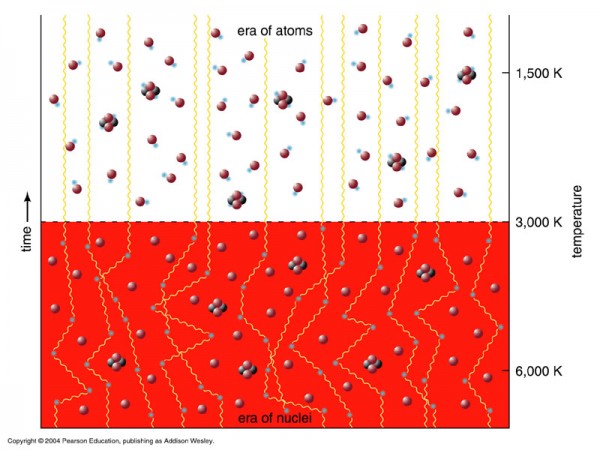

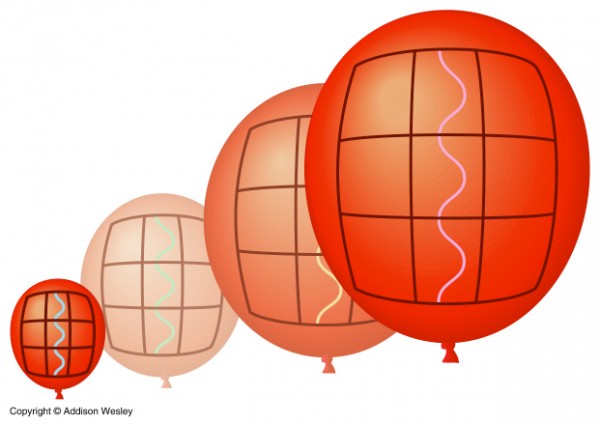
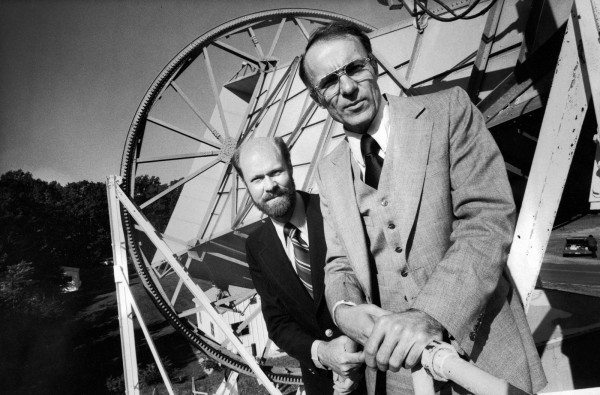
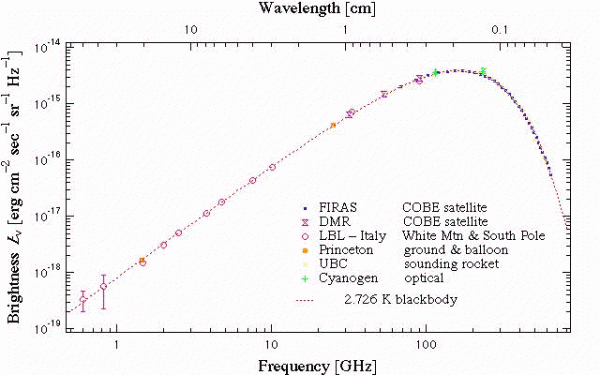

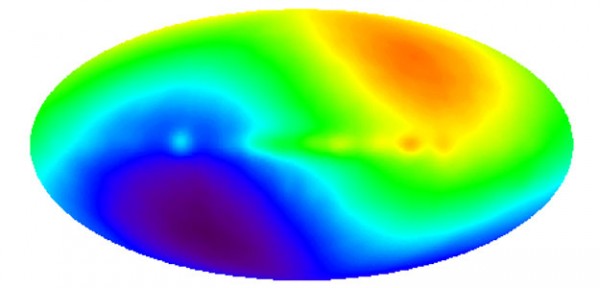
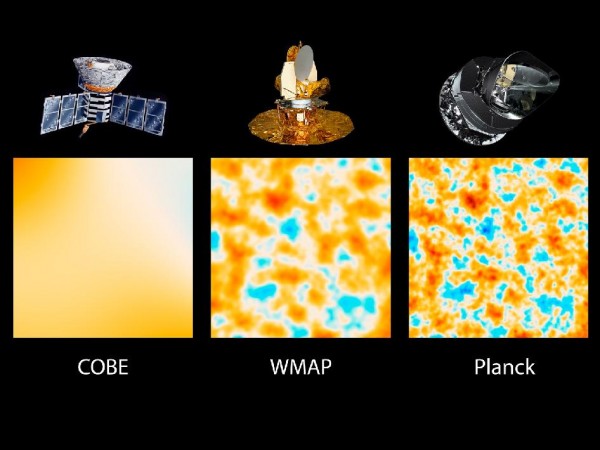
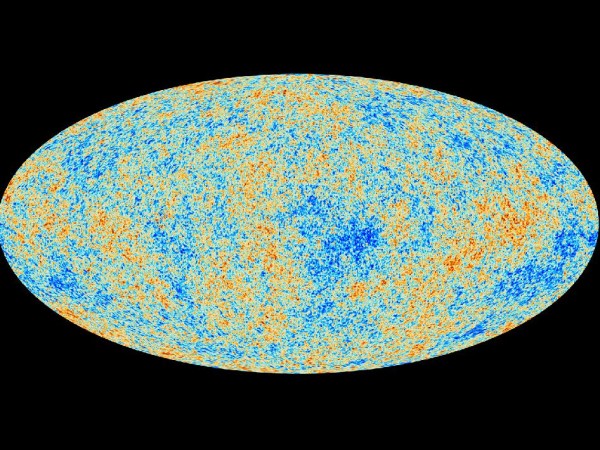
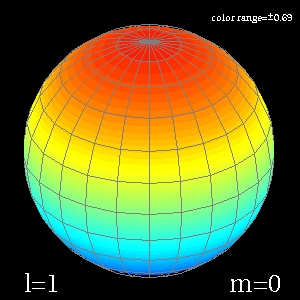

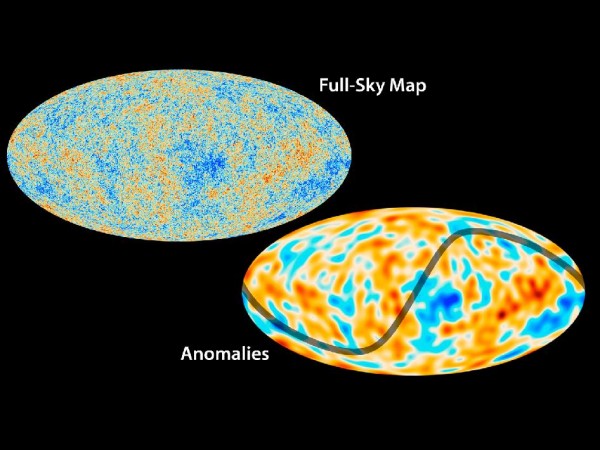
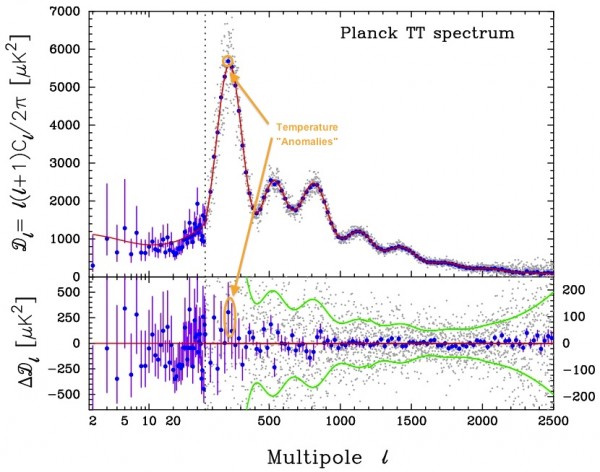
I hurt my hand today and had to get stitches. This post makes me feel better already, thanks Ethan!
Well you say the universe is pretty much what we thought it was, that is 27% dark matter and 69% cosmological constant, both of which we have very little clue about what they really are and represent. So to me it looks more like the universe fits a model where we have given names to the things that make it fit, but we don't really know about them !
If you show them on the “anomalies” chart, above, they look pretty menacing.
That's in part because the supplied graphic doesn't include the color bar for the anomalies, which is presumably set to a level where we can actually see the effects. I realize that that graphic comes from a press release or something comparable, but anybody who showed a graphic like that to an audience of scientists would be rightly ridiculed.
Does somebody have a link to an arXiv paper with the original version of the anomaly globe plot? Not that I will look at it today, but something to inspect when I have a little more time.
Ethan, nice thought-provoking post, which leaves me with a couple of questions.
(1) About that 1% 'odds that the Universe would have that particular anomaly,' it sounds as though if we were to calculate the odds of any anomaly of similar magnitude, without prior concern for where on the spectrum it should be, the result would become less significant. Is this correct? Any figures available after correction for multiplicity?
(2) Looking at those 3 figures side by side of CMB from COBE, WMAP, and Planck, the Planck image certainly contains more structure, but I can't tell from the images alone whether it contains more information. For example, if the detector pixel size was reduced for Planck, but everything else remained the same, then this would lead to higher shot noise superimposed on the ideal image. So, any easy way to indicate the increase in information the new data provide?
How do astronomers prefer to measure information content, anyway? In medical physics, the are many metrics, such as detective quantum efficiency, but none is considered superior. In fact the definitive measure is considered to be how frequently a cohort of humans can discern the relevant features - which is a pity if we want to remain open to the possibility of some other machine someday doing a better job.
"About that 1% ‘odds that the Universe would have that particular anomaly,’ it sounds as though if we were to calculate the odds of any anomaly of similar magnitude, without prior concern for where on the spectrum it should be, the result would become less significant. Is this correct? "
I don't think so. <1% (0.3%) is the odds of a measurement falling 3 sigma outside the expected value due to random chance alone. So it's already the "any anomaly of this size" probability.
#6 I think what #5 is referring to is the reduction in significance when you perform multiple significance tests. If you test for 100 possible anomalies (eg 100 different Multipoles) you actually *expect* one of them to be significant at the 1% level. (subject to any expected correlations between Multipole estimates). Because of this you can adjust the 1% way up.
"the rest frame of the cosmic microwave background" ... would seem to mean that there is indeed a privileged frame of absolute rest. ... "a few hundred kilometers per second" ... and typical objects aren't even moving at relativistic speeds? Well.
I was wondering how sharp that 3,000K cutoff really was? So the view of the CMB we have actually has some depth to it?
re #7, you are incorrect. They are not the same test being done, therefore they are independent.
Additionally, if you measure the height of me, you will get a variation on that value. however, you will never see less than 5'5 or greater than 5'8.
Your assumption is based on a statistical model that the distribution of results is normal and the normal curve extends to infinity, which in many cases proves the assertion wrong because it isn't possible to move outside a range.
re #9. My gosh Wow you really picked my comment apart. I'd thought it was pretty innocuous and general.
Firstly I'm not incorrect if they are independent as I never said they weren't. I just said subject to any expected correlations. If there aren't any then fine. Anyway, if the tests being done are not the same that does not imply they will be independent. Independence here relies on whether a random variation in one observable is correlated with a random variation in another observable. You're confusing error in a test procedure with deviations in the universe from results expected from a model.
"Your assumption is based on a statistical model...". My assumption is only based on "if the significance level is 1%" . Also, your sweeping statement about the normal curve has just wiped out a huge chunk of statistical inference theory. However, statistical theory does *not* rely on a distribution being precisely normal nor extending to infinity at all. It is all based on a tendency toward such a distribution. If applied correctly, you can get a pretty good handle on how good an approximation to the normal you've got and hence the significance level can be valid.
if you weren't saying they were independent then you are either clueless about how errors propagate or knew you were talking bollocks.
I'll let you pick.
Why don't you show the dipole, quadrapole and octopole maps?
Dipole (note: green "S" contains the ecliptic):
http://map.gsfc.nasa.gov/media/ContentMedia/map_model_1.gif
Qudrapole:
http://hera.ph1.uni-koeln.de/~heintzma/SNR/b4/CMB_s.gif
Octupole
http://www.phys.cwru.edu/projects/mpvectors/images/paper3/map_teg_3.png
Wow! Correlated to the ecliptic (and equinoxes).
Oh, that is why. Lift the rug a little higher when sweeping under.
Regarding the statistical probabilities, from Copi, Huterer et al:
"there is a dramatic lack of angular correlations at angles greater than sixty degrees; the octopole is quite planar with the three octopole planes aligning with the quadrupole plane; these planes are perpendicular to the ecliptic plane (albeit at reduced significance than in the first-year full-sky maps); the ecliptic plane neatly separates two extrema of the combined l = 2 and l = 3 map, with the strongest extrema to the south of the ecliptic and the weaker extrema to the north. The probability that each of these would happen by chance are 0.03% (quoting the cut-sky ILC123 S1/2 probability), 0.4%, 10%, and < 5%. As they are all independent and all involve primarily the quadrupole and octopole, they represent a ∼ 10−8 probability chance “fluke” in the two largest scale modes. To quote [7]: We find it hard to believe that these correlations are just statistical fluctuations around standard inflationary cosmology’s prediction of statistically isotropic Gaussian random alm [with a nearly scale-free primordial spectrum].”
http://arxiv.org/pdf/astro-ph/0605135v2.pdf
So just the reported alignments represent a 1 in 100,000,000 chance in LCDM.
Now add in the galaxy spin handedness along the same direction, the galaxy cluster problem along the same direction.......
The Universe is not isotropic and homogeneous, and Earth is clearly in a very special, non-random location with respect to its largest structure.
It gets worse.
There is no way to get an anisotropic CMB out of chaotic inflation, so.
Next.
Sorry Rick, but I'm going to take my advice on what can or cannot be explained by inflationary theories from the experts on such, not from someone who couldn't even figure out what the heliocentric model predicted vis-a-vis the relative motion of the sun and stars as the seasons change.
And it turns out in some models it can be explained.
"Next" indeed. As in next time post in the appropriate thread.
CB: I thank you again for your help on the referenced matter, it was very helpful to me and I am in your debt.
It is of course completely illogical to discount evidence based solely on its source- the fallacy is "argumentum ad hominem".
It is doubly illogical to do so when the source, in this case, is a direct citation of the referenced paper from the U Mich Axis team- you know, the guys who were told for the last ten years that the Axis was a foreground, or a scanning beam anomaly, or a consequence of the orbit, etc etc etc.
They were right.
The critics were wrong.
As far as inflation is concerned, it's really very simple. It is an absolutely canonical requirement of inflation that there be statistical isotropy across the CMB multipoles.
There isn't.
Next.
"It is of course completely illogical to discount evidence based solely on its source"
If it's been pulled from someone's arse, even if you can't see it, you can reasonably assume it's shit.
Wow:
I submit that you have failed to engage, much less refute in any way at all, the excerpt from Copi, Huterer above.
Your comment, therefore, oat logically applies to yourself.
Rick, it's not the CMB anomaly I'm discounting, it's your uninformed belief about what inflationary models do and do not allow.
Turns out that while many people were predicting that the WMAP anomaly would turn out to be an artifact, some -- even if they believed it would go away -- were working on the theoretical implications. While it does contradict some inflationary models, it does not contradict others.
Data is data, but rejecting an *interpretation* of data because everything the speaker says is solely for the purpose of reaching an a-priori conclusion (and would thus, e.g., look into the apparent motion of stars just long enough to arrive at false but comforting conclusions, and then stop) isn't ad hominem. Or if you insist that it is, then it's the very practical kind where one does not tell time via a broken clock, even if it does happen to be correct twice a day -- you reject the broken clocks reading, until such time as a working clock corroborates it. And really that means you just pay attention to the working clock and ignore the broken.
You owe no debt to me, Rick. You only owe it to yourself to continue that small bit of education I tried to give you and NOT STOP once you read something that confirms your biases.
"I submit that you have failed to engage...the excerpt from Copi, Huterer above."
I submit that I wasn't intending to engage the excerpt from Copi.
I was countering your simplistic meme that "“It is of course completely illogical to discount evidence based solely on its source”.
It is NOT completely illogical to do so.
"Rick, it’s not the CMB anomaly I’m discounting, it’s your uninformed belief about what inflationary models do and do not allow."
>> Well, CB, all I can say is that in this case you have some fairly serious opposition:
".....we will return to the low-l problem and realize that it is far more serious when viewed in angle-space instead of l-space, and that it presents a serious challenge to ***the absolutely canonical prediction of the standard cosmological model*** – inflationary ΛCDM – of statistically independent Cl ’s."---Starkman, Copi, Huterer, et al 2009 "Is the large angle CMB Inconsistent with concordance cosmology?"
I have already pointed out above that this team has been proven correct by Planck, and all the heavyweights who spent ten years trying to make the Axis go away have been proven wrong.
Therefore, I would hardly characterize them as "uninformed".
CB: Turns out that while many people were predicting that the WMAP anomaly would turn out to be an artifact, some — even if they believed it would go away — were working on the theoretical implications. While it does contradict some inflationary models, it does not contradict others."
>> I contradicts the absolutely canonical *prediction* of inflation models, CB. It is of course possible to retroactively go back and gin up some kind of ex post facto "fix" once the observations contradict your model- in fact this is exactly what has been going on for a very long time.
What is relevant from a scientific point of view, is whether the model *predicts* what we actually *observe*.
In the case of inflation, the answer is:
No.
It doesn't.
CB: Data is data, but rejecting an *interpretation* of data because everything the speaker says is solely for the purpose of reaching an a-priori conclusion (and would thus, e.g., look into the apparent motion of stars just long enough to arrive at false but comforting conclusions, and then stop) isn’t ad hominem.
>> I was in grievous and humiliating error, which you exposed. I am in your debt. I thank you again.
"Or if you insist that it is, then it’s the very practical kind where one does not tell time via a broken clock, even if it does happen to be correct twice a day — you reject the broken clocks reading, until such time as a working clock corroborates it. And really that means you just pay attention to the working clock and ignore the broken."
>> None of this has the slightest relevance, either to my esrlier blunder, freely acknowledged, or to your blunder above, concerning the canonical prediction of inflastion, which I will be delighted and shocked should you acknowledge in a similarly forthright manner.
CB: You owe no debt to me, Rick. You only owe it to yourself to continue that small bit of education I tried to give you and NOT STOP once you read something that confirms your biases.
>> I do owe that debt both to myself, and to you, and all who assist me in overcoming grievous flaws in my understanding.
Thanks again.
Sorry, Dick, it's YOU that is the uninformed. Because you read with a result in mind and go only so far as to assert some factoid (look up the meaning of that word, Dick) in support of that preconceived notion.
Actually, CB was being too generous: you're self-misinformed, not merely uninformed.
The Copernican Principle was just verified false( as was the cosmological, LCDM in general, and the standard model).
Someone ought to make a movie about that.
www.ThePrincipleMovie.com
No, john, it hasn't.
Actually, Wow, it has.
There can be no up, no down, no right, no left- in short no preferred direction in space under the assumptions of the Copernican Principle.
Since the release of Planck's data confirmed the existence of just such a preferred direction in space, the Copernican Principle has been shown to be false, as a matter of scientific observation.
One can determine an up, a down, a left, a right, with respect to this Axis.
That would be more than shocking enough.
But the actual observations are much more shocking still.
That preferred direction happens to be pointing directly at us.
Actually, Dick, it hasn't.
"There can be no up, no down, no right, no left- in short no preferred direction in space under the assumptions of the Copernican Principle."
Incorrect.
Read up on what the Copernican Principle is, before you claim it wrong, Dick.
Too bad, so sad, you failed. Again.
This is as sad as people claiming the CMB anisotropy disproves relativity, because now there's a "prefered reference frame" we can measure our velocity against.
Since the odds are good that someone believing that is reading this, lemme explain: The Relativity Principle that SR and GR are based on says that the laws of the universe have the same formulation in any reference frame (e.g. if the speed of light is a constant, it is constant in every reference frame, not just one "special" frame i.e. the Luminiferous Aether).
There is no prohibition against having some convenient reference frame to measure your relative velocity against.
It is the Copernican/cosmological Principle, CB, that is disproved by Planck's CMB observations..
Not relativity.
Only FLRW Relativity (isotropic and homogenous) bites the dust
LTB solutions might, possibly, survive.
Wow:
Both the Copernican Principle and its generalization as the cosmological principle are falsified by the confirmation, in the Planck data, of a preferred direction across the universe in the CMB, pointing at...
Earth.
Since you've already proven you don't know what these are, your assertion is entirely worthless.
That there is anisotropy DOES NOT mean there is a preferred direction.
Another thing you seem completely unable to grasp.
Wow:
"Planck's map greatly improves cosmologists' understanding of the universe, but it does not solve lingering mysteries over unusual patterns in the CMB. These include a "preferred" direction in the way the temperature of the light varies, dubbed the cosmic "axis of evil"
http://www.newscientist.com/article/dn23301-planck-shows-almost-perfect…
If you prefer a more technical approach, Wow:
".... a preferred plane was detected, having a normal direction with a northern end position close to the northern end of the CMB dipole axis. In addition, a most preferred direction was found in that plane, with a northern end direction very close to the north ecliptic pole."
http://arxiv.org/abs/astro-ph/0609147
Needless to say, the terms "ecliptic" and "dipole" do not refer to just "any old" preferred direction.........;-)
"It is the Copernican/cosmological Principle, CB, that is disproved by Planck’s CMB observations.. Not relativity."
Thank you, yes, I know.
The point was that both claims are based on equating different meanings of "preferred" in different contexts.
There is no equivocation whatsoever involved in the statements:
1. The Copernican/cosmological Principle assumes no preferred direction discernible in the cosmos
2. Planck reports a preferred direction discernible in the cosmos.
Both statements are clean, and easily falsifiable.
Neither can be falsified, therefore:
The Copernican/cosmological Principle stands observationally falsified as of March 21, 2013.
"There is no equivocation whatsoever involved in the statements"
No thought in them, either, Dick. Or fact.
"dubbed the cosmic “axis of evil”"
Look, Nude Scientist is OK and all, but it's not much more than the science version of a tabloid. As that statement quoted there shows.
“…. a preferred plane was detected,"
Yes, like the ecliptic is a preferred plane.
Or the equator.
But neither disprove either Copernican Principle nor give the universe an absolute inertial reference frame.
I think Ogden Nash had you in mind, Wow, when he penned his immortal bit of doggerel:
"A man convinced against his will
Is of the same opinion still".
I am very happy, very happy indeed, to have come to know that the guys doing the real cutting edge science- the guys making these discoveries- are nothing at all like you.
No, Dick, he didn't.
But I suppose you're not too worried about making shit up, are you.
The fat lady sings?
"Inflationary paradigm in trouble after Planck2013"
http://arxiv.org/abs/1304.2785
Relevant excerpt:
"In sum, we find that recent experimental data disfavors all the best-motivated inflationary scenarios and introduces new, serious difficulties that cut to the core of the inflationary paradigm."
A contributing author is Paul Steinhardt, one of the creators of inflation theory.
There's a big discussion and the short version of it is that the paper doesn't actually support claims that the headlines about the paper says it does.
Really, Wow?
Perhaps you could explain.
Steinhardt, after all, is one of the creators of the theory in question (inflation).
He points out that only plateau-like inflation models are the only inflation models supported by Planck, but plateau-like inflation models, instead of taking universally-assumed initial conditions and smoothing them out through inflation, instead require smoothness in the initial conditions, in order to initiate inflation in the first place.
He refers to this as the "inflationary unlikeliness" problem, and sums it up this way:
"After Planck2013, the very same argument used to defend
inflation now becomes a strong argument against it. Because the potential energy density of the plateau MI4 is bounded above and must be at least a trillion times smaller than the Planck density to obtain the observed density fluctuation amplitude, the only patches that exist are problematic ones that were deemed non-existent at the classical level.....
".... initial smoothness on a scale a billion times greater than the Hubble volume (and even greater still for plateau-models with low energy inflation) [25]. Recall that inflation was supposed to explain smoothness, not assume it.
"In sum, by favoring only plateau-like models, the Planck2013 data creates a serious new challenge for the inflationary paradigm: the universally accepted assumption about initial conditions no longer leads to inflation; instead, inflation can only begin to smooth the universe if the universe is unex- pectedly smooth to begin with!"
This is the point I made to CB above.
It is always possible to go back after the fact and gin up some ex post facto "fix" once a theory fails to predict observations.
But that is not what is relevant from a scientific point of view.
From a scientific point of view, what is relevant is whethe4r the theory predicts what is observed.
In the case of inlfation, the answer is:
No.
It doesn't.
I could, but you won't listen.
As evidenced by your immediate assertion that THIS is a "final nail in the coffin" without done any testing yourself on its claims.
If it really DID overturn current cosmology, that is an extraordinary claim, isn't it? So where is your requirement for extraordinary evidence?
You aren't looking for science, here, you're looking for vindication.
You think it doesn't matter if a theory can be modified to match observations? Really?
You think it's somehow verboten to alter your theory to match reality when reality throws a curve ball, rather than, say, the utter foundation of the scientific method?
Instead, you think the only option is to throw away the theory entirely, no matter its prior predictive power and ability to be adjusted to suit the new data.
Because you believe it's always possible to "gin up" something to make the theory match -- amply demonstrating you've never had to do it.
"Ginning up" theories to match existing observations is how nearly all theories we currently use, including subsequent modifications, came to be. And it's actually extremely hard, and many times impossible. Which is why we don't have a giant amalgamam of different theories each with a bunch of patches thrown on so each one matches and there's no reason to prefer one over the other. Because often the right kind of patch doesn't exist. But when it does, we don't throw that theory out.
We do of course expect these modifications to theories, as in just plain ol' theories, to have additional predictions that will be tested. Any modifications to inflation will do the same.
This is all basic science, the kind of thing you don't even notice to complain about when it isn't happening to the target of your ire. It's in this case specifically that you create this edifice of philosophical objections to the scientific method so you can assert that a single observation means a whole set of theories are out, even if that set has members which agree with the observation.
Whatever. That's not science. That's your bias, your pre-formed opinion. And that is what is irrelevant.
@Wow:
I could, but you won’t listen.
>> You are the one with listening problems.
As evidenced by your immediate assertion that THIS is a “final nail in the coffin” without done any testing yourself on its claims.
>> The only one who says "final nail in the coffin" is Wow. Red herring is the logical fallacy employed by Wow here.
If it really DID overturn current cosmology, that is an extraordinary claim, isn’t it?
>> Sure is. Since you are the one advancing it, it certainly seems you would like to move the goalposts instead of answering Steinhardt.
Why?
Oversensitive much?
"So where is your requirement for extraordinary evidence?"
>> The extraordinary evidence is provided by Steinhardt. He states that the inflationary paradigm is in trouble.
Why don;t you answer his points, if you can?
"You aren’t looking for science, here, you’re looking for vindication."
>> Quite to the contrary. You are apparently incapable of abiding the slightest challenge to your beliefs, typically not a sign of a healthy world view.
@CB:
You think it doesn’t matter if a theory can be modified to match observations? Really?
>> You really think it doesn't matter if a theory is modified post-hoc to explain observations it did not predict? Really?
You think it’s somehow verboten to alter your theory to match reality when reality throws a curve ball, rather than, say, the utter foundation of the scientific method?
>> You think it's somehow irrelevant to the question of a theory's validity, whether its predictions match subsequent observations?
Instead, you think the only option is to throw away the theory entirely, no matter its prior predictive power and ability to be adjusted to suit the new data.
>> It has no predictive power, as Steinhardt has shown in the paper (see "multiverse problem"), if you would bother to read it. Its predictions (inflation smooths an initially unsmooth universe) have been falsified by Planck, which requires the universe to be extraordinarily smooth in order for the plateau-like inflation to begin in the first place.
"Because you believe it’s always possible to “gin up” something to make the theory match — amply demonstrating you’ve never had to do it."
>> False again, CB. I have personally had to abandon a theory in the face of conclusively falsifying observations. Thanks to you :-)
“Ginning up” theories to match existing observations is how nearly all theories we currently use, including subsequent modifications, came to be.
>> False. "Ginning up" theories to match observations is a sign of the impending demise of all previous theories- Ptolemy's epicycles (although Julian Barbour points out that this was actually a brilliant attempt on the part of Ptolemy to deal with non-uniform motion a millenium and a half before the mathematics were developed to describe it)....Newtonian gravity........Maxwell's aether............and now, of course, and unsurprisingly, the myriad ad hoc patches and fixes on Big Bang cosmology (inflation, dark matter, dark energy, multiverse, etc).
" And it’s actually extremely hard, and many times impossible."
>> Completely agreed. Which is why it is necessary to counter the propagandists who would attempt to impose the current "consensus model" of cosmology as somehow binding upon the intelligent as "the way things really are".
In truth, consensus cosmology is in trouble, especially saince Planck.
As Steinhardt argues.
"Which is why we don’t have a giant amalgamam of different theories each with a bunch of patches thrown on so each one matches and there’s no reason to prefer one over the other."
>> As Steinhardt and others argue, the immense number of patches on BB/inflation/LCDM standard cosmology has reached a quite unhealthy stage, and new ideas are going to be required.
While this is an opinion, it is certainly not an unsupported one.
Very well-informed theorists agree.
"Because often the right kind of patch doesn’t exist. But when it does, we don’t throw that theory out."
>> The question is, when the patches become so obviously ad hoc, over such a long period of time, and the patches themselves turn out to be unsalvageable, at what point does the scientific method require the admission that a new theory is required- at least that new theories ought to receive consideration for funding and research?
Steinhardt (and others) argue that we have reached that point.
"We do of course expect these modifications to theories, as in just plain ol’ theories, to have additional predictions that will be tested. Any modifications to inflation will do the same."
>> As the paper shows, the only inflation models consistent with Planck themselves require initial conditions which inflation was originally developed to solve.
That is a big problem.
It even has a name now, thanks to Steinhardt.
The "inflationary unlikelihood" problem.
"This is all basic science, the kind of thing you don’t even notice to complain about when it isn’t happening to the target of your ire."
>> Sheesh you guys are touchy. Sorry, but the evidence is very strongly suggesting standard cosmology is not only wrong, but has reached the end of its rope.
Something new will be required.
Why should that surprise you?
It happens every century or so.
"It’s in this case specifically that you create this edifice of philosophical objections to the scientific method so you can assert that a single observation means a whole set of theories are out, even if that set has members which agree with the observation."
>> False.
It is not a single observation, but a whole, long series of them, over many many decades, all of hich have involved observational challenges to the Copernican Priniciple; all of which have involved the invention of an ad hoc "fix" to the theory in order to explain the observational challenges; all of which have ultimately led science to the Big Red Flag of the multiverse- an entity which cannot ever, even in principle, be the object of direct observation and hence, of the scientific method.
Is it really possible you cannot see this?
"Whatever. That’s not science. That’s your bias, your pre-formed opinion. And that is what is irrelevant."
>> Steinhgardt's opinion is far more relevant than mine, of course.
But science is, exactly, the process whereby we come to overthrow those things which we think we know.
That is science.
That is the only thing that makes science powerful.
Painful, I know.
But there it is.
We happen to live at a time when a very beautiful, very powerful, scientific paradigm is collapsing.
Something new is coming.
And while we are on the subject of predictions, here is one:
That "something new" will have to, after great pain, finally abandon the foundational assumption of the modern scientific world view, that Earth is nothing special.
*That* is the metaphysical assumption which lies at the heart of the present difficulties (inflation, dark matter, dark energy, multiverse).
All of these things are invented so as to explain observations which otherwise would result in the Earth occupying a special position with respect to what we observe.
What absolute space was for Newton, the Copernican Principle will turn out to be for consensus cosmology; that is.....
The metaphysical assumption embedded in the theory which ultimately sinks it.
>> The only one who says “final nail in the coffin” is Wow
Quotation marks are also used to show paraphrasing, Dick.
Seems like your English lessons only stick far enough to make you pretend you win.
Wow:
It is really amazing, you would apparently rather sit here and quibble than deal with Steinhardt's points.
Why?
Dick, all you did was quibble.
Fuck, the Steinhardt *paper* is quibble.
You're not here to discuss it, only to big it up and pretend it's some sort of end-of-the-line for current science and your vindication is at hand.
Like every other crackpot google gallileo on the internet.
Well, Wow, it appears we have reached the logical conclusion of our discussion, and I personally am satisfied you cannot deal in any substantive way with Steinhardt's paper.
There was no option to be logical, Dick.
You weren't here for the logic.
Is there an RSS feed when using the entire content articles as a substitute of just the teasers?
http://www.GtDzV5buQA.com/GtDzV5buQA